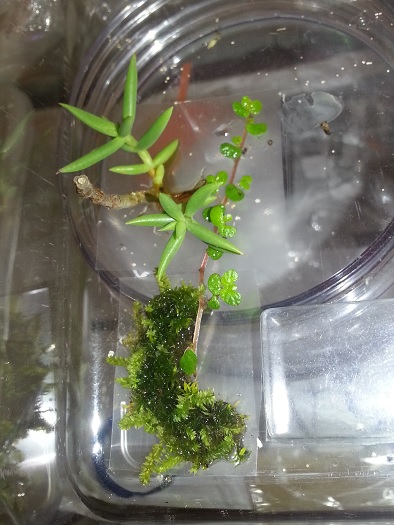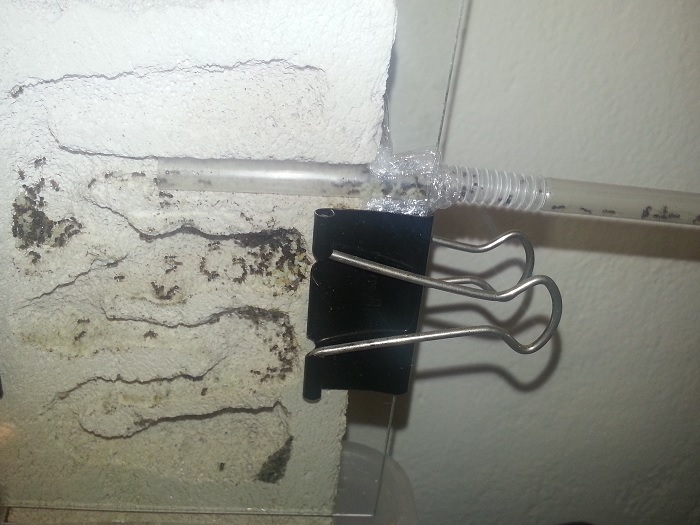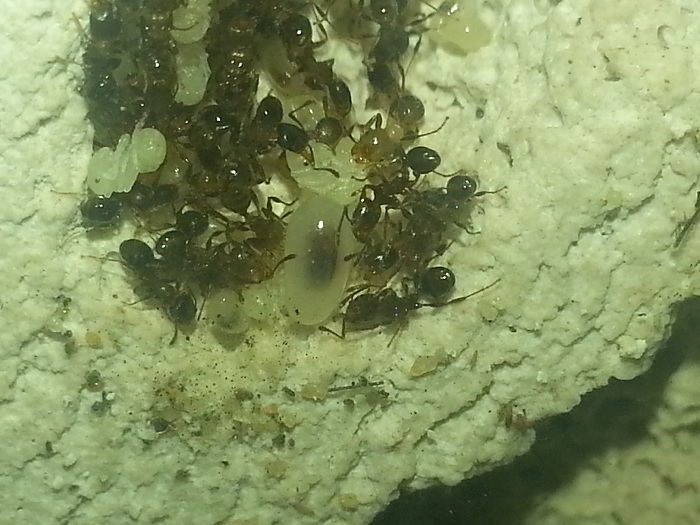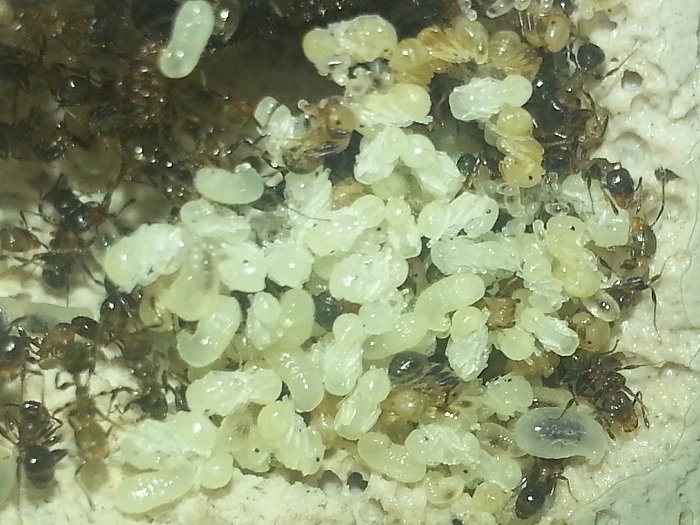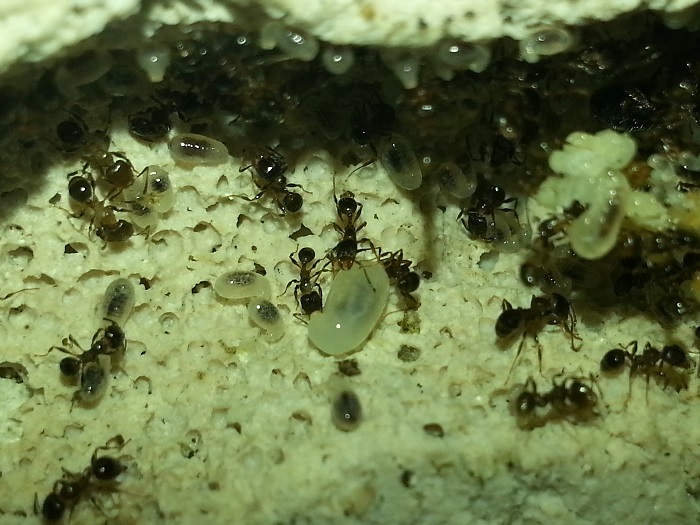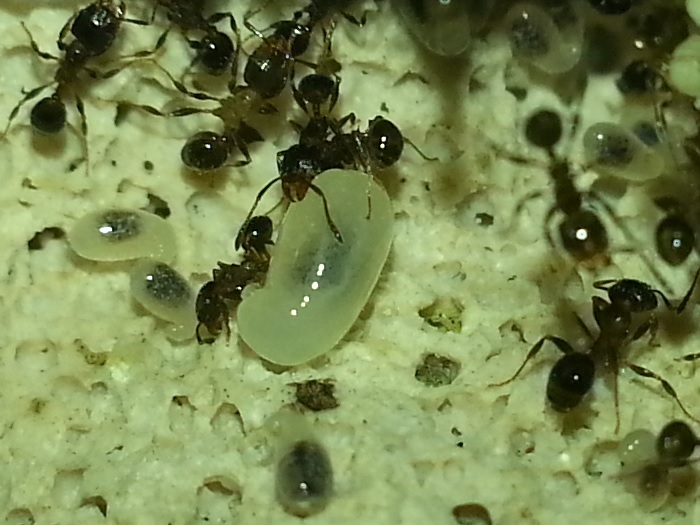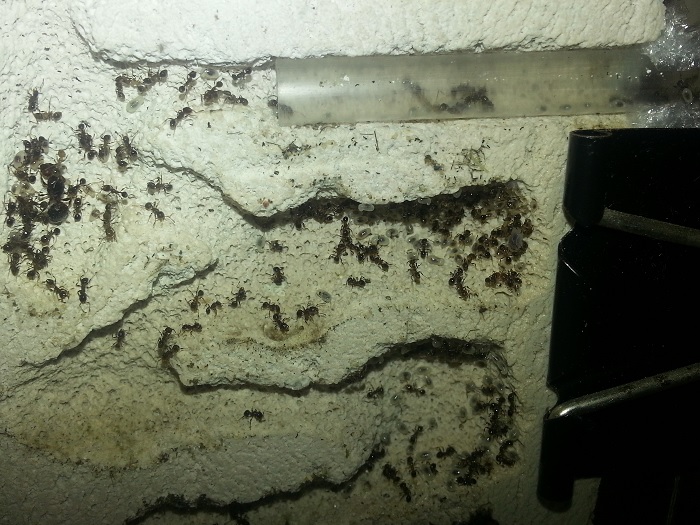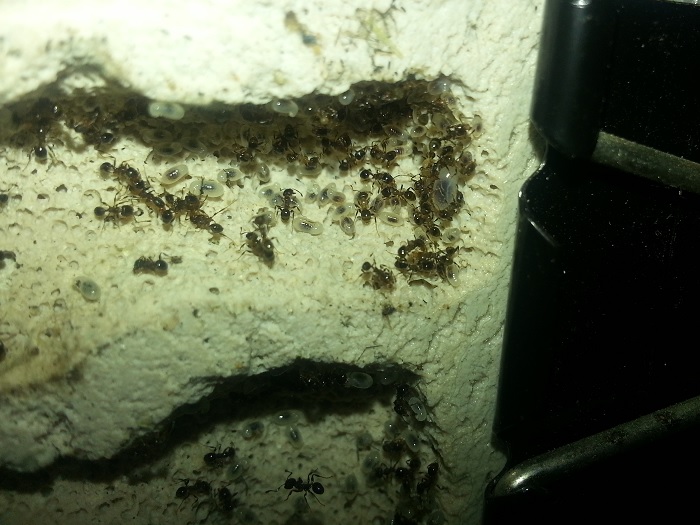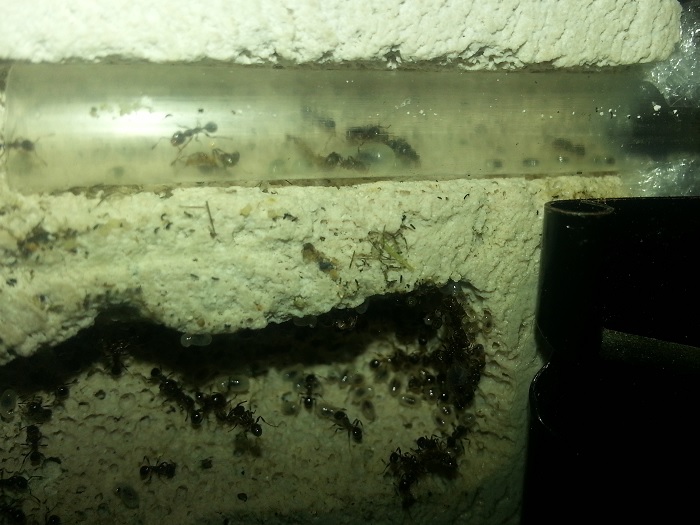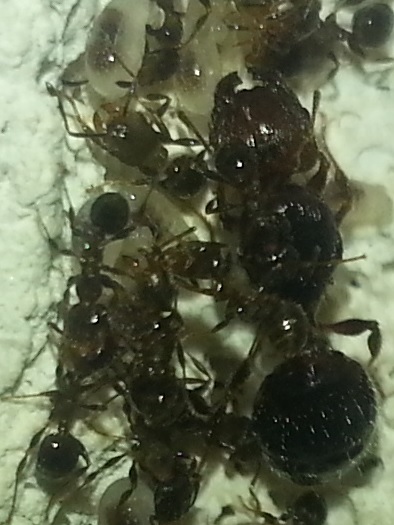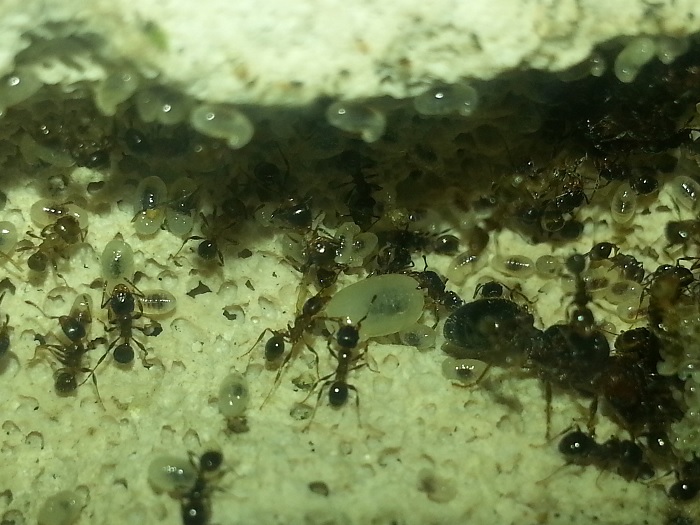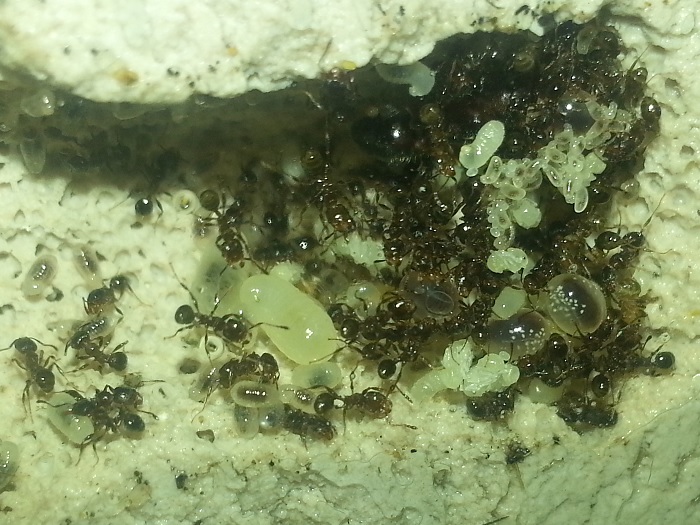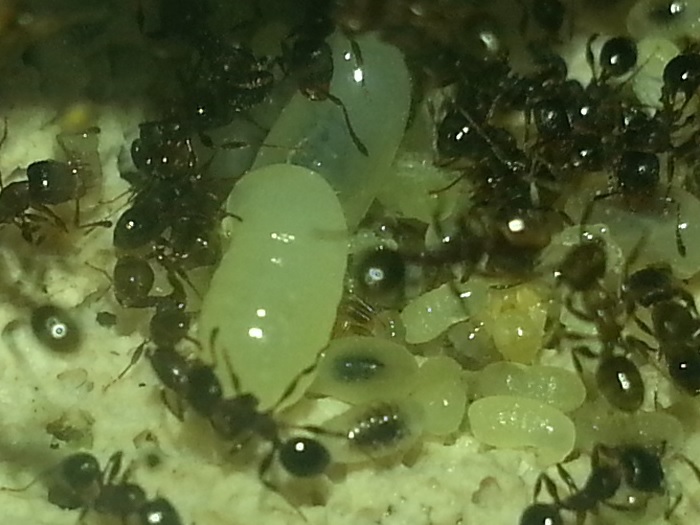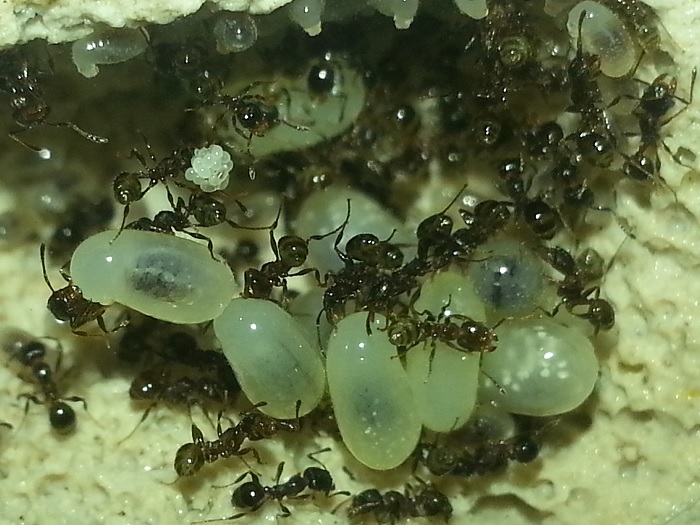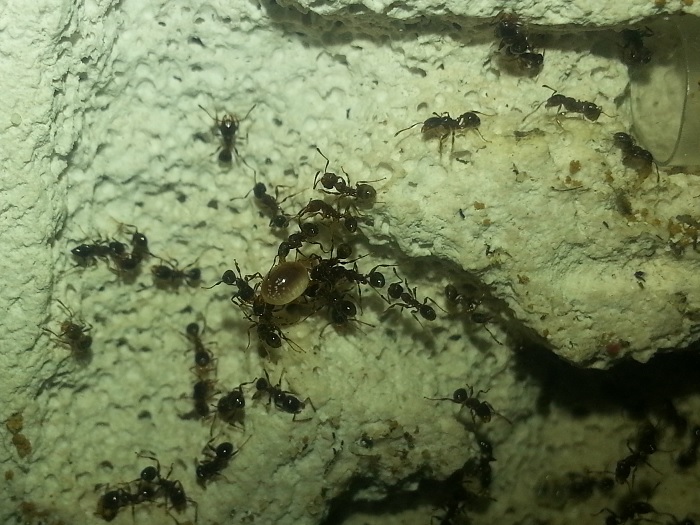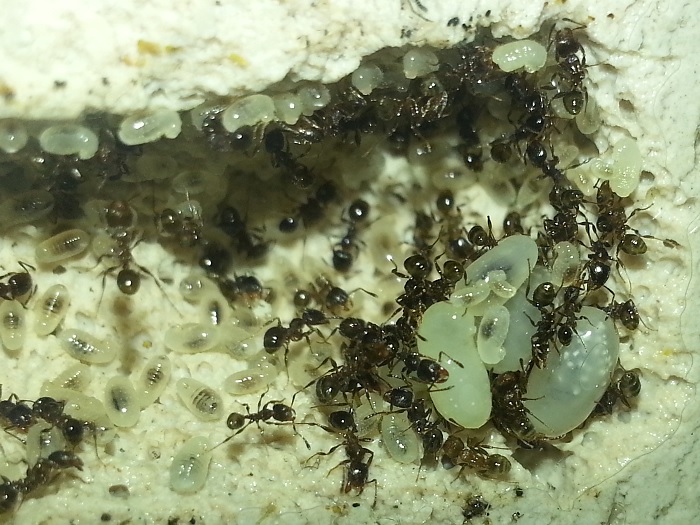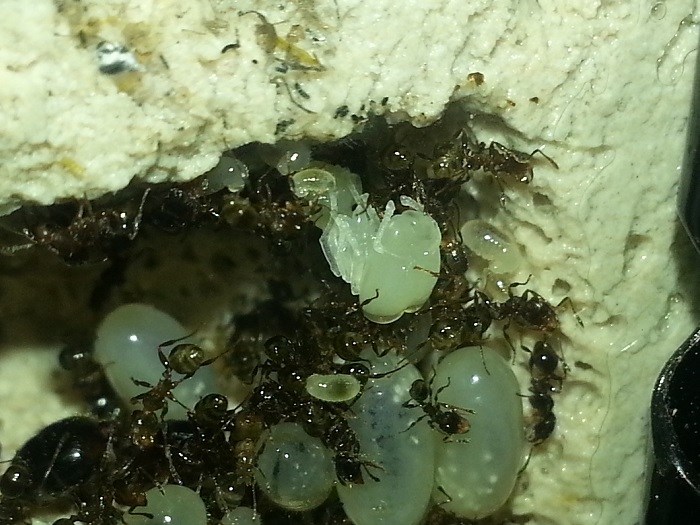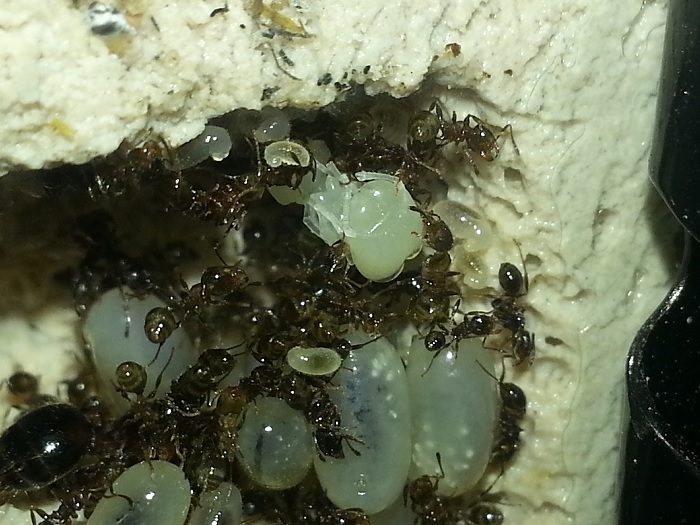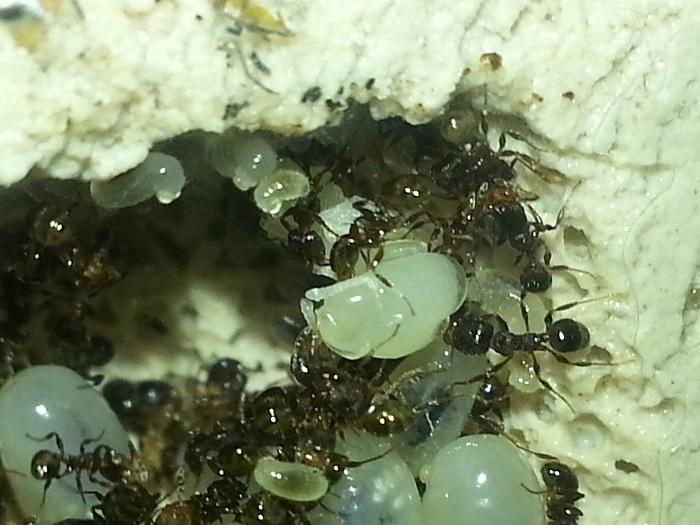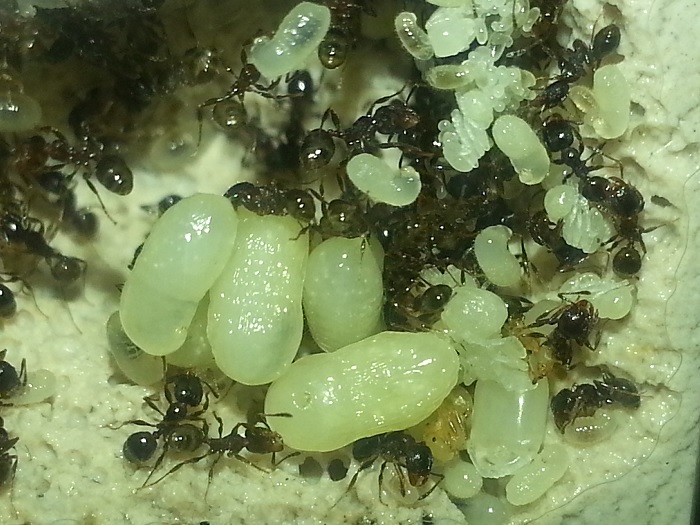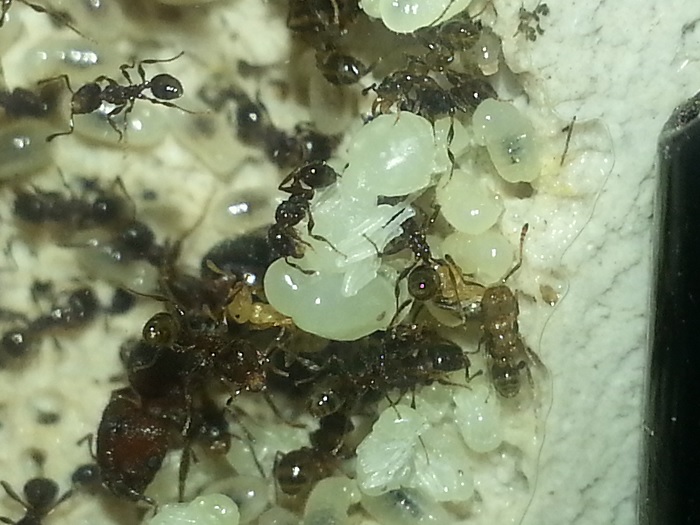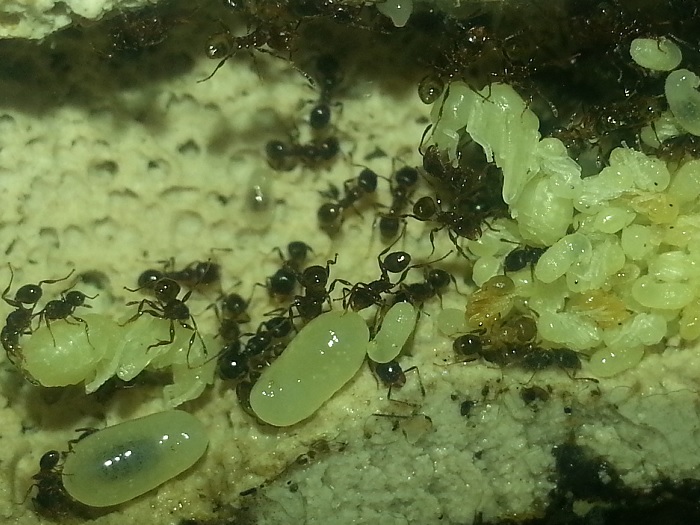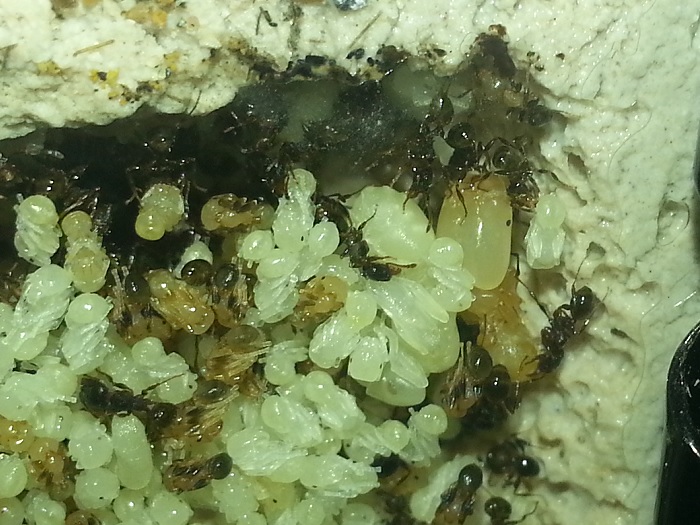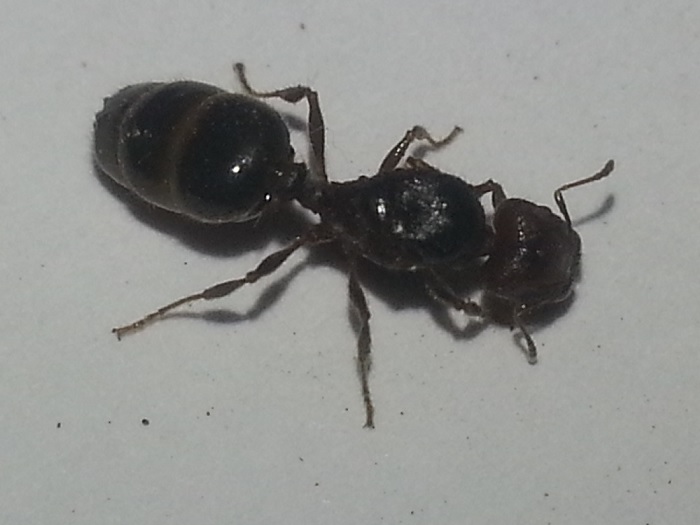9/11/2015
The excess moss from the green-head ant formicarium decoration has placed in the outworld. The workers enjoy staying around that area and are munching on it, somehow.
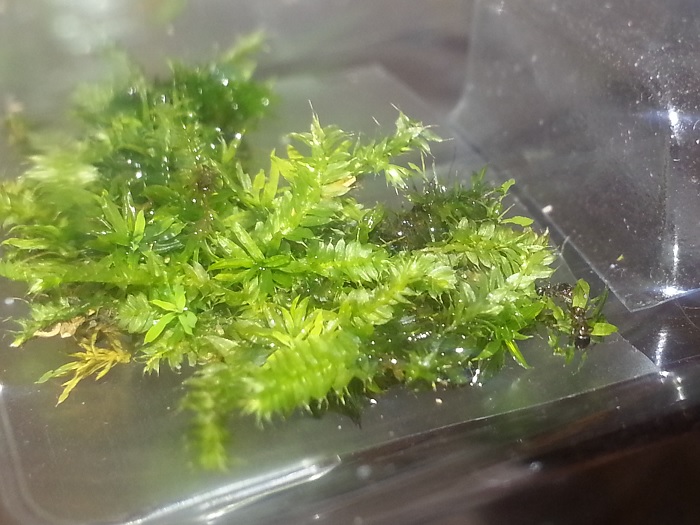
On another hand, lots pupae have eclosed and lots more are about to. The ants really like to pile up and cram all the brood together. Even though there are still plenty of space left elsewhere. This made me bit worried that some may get squashed, but it looks like everything is fine. Green-head ant queen also did the same and she appears to have very good memory of where she put the eggs.
Most springtails got killed by the ants, except one very well hidden and one super agile. In the left hand side of the photo below, the super agile springtail can be seen. It is trying to sneak up to the eating/food storage (mouldy?) area to steal the food, then the ants will chase it away. This process has been repeat over and over...
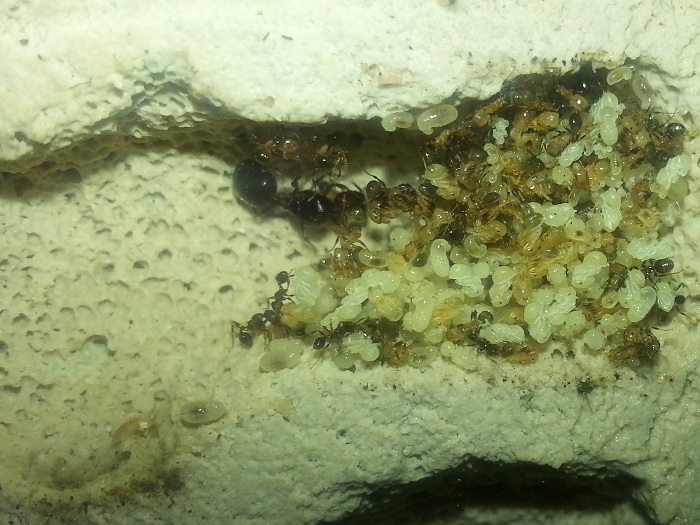
Edited by antmaniac, November 12 2015 - 2:41 AM.




